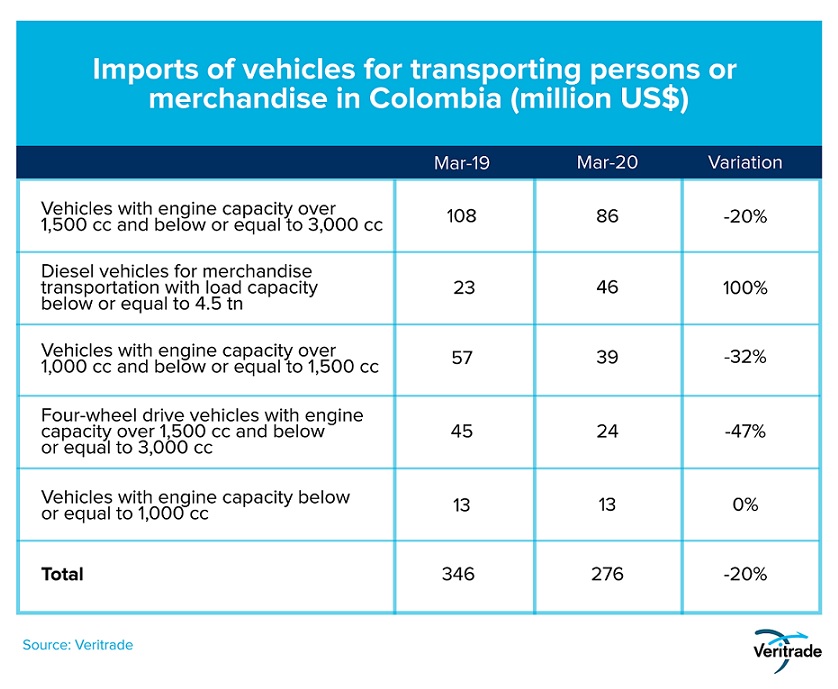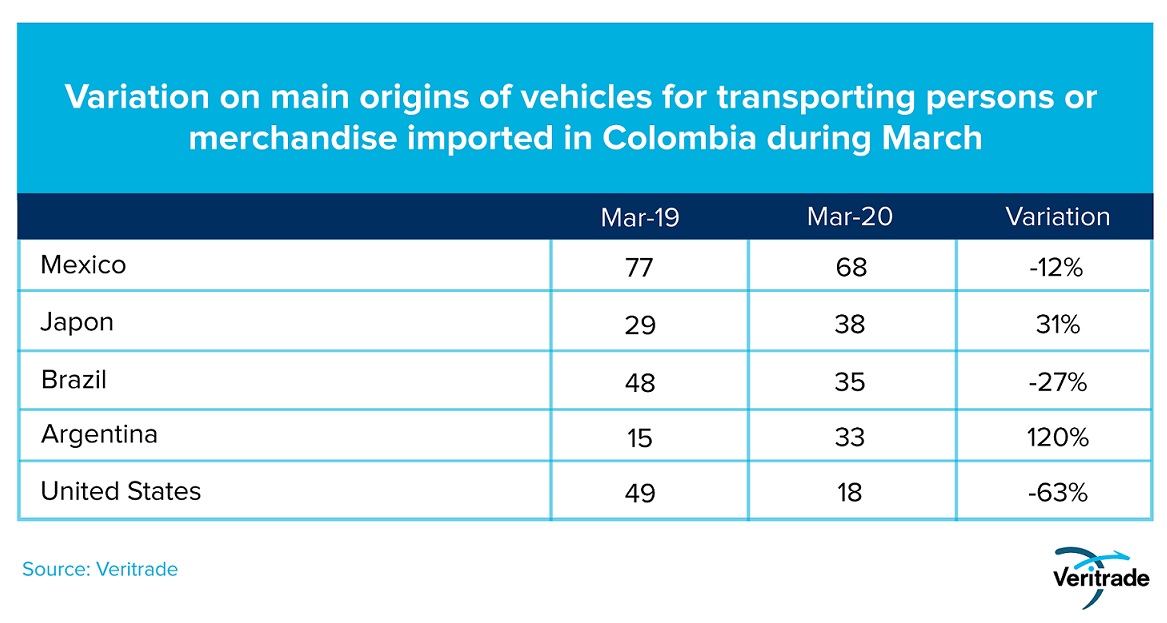Coronavirus: Colombian vehicle sales drop
Published on 24 April 2020
During March, sales of vehicles for transporting people and goods in Colombia fell 20% compared to the same month the previous year.
The reduction in demand as a result of the stoppage of physical activities due to quarantines around the world is significant and inevitable. However, the magnitude of the impact is still uncertain.
At the moment, the March figures already show a considerable deterioration in vehicle imports, one of the main consumer goods and capital used as a benchmark for economic activity. The reduction has mainly affected tourism vehicles, which are more sensitive to consumer confidence, while the commercial segment, transport units are part of the capital goods necessary to start or continue operations that respond to contractual obligations. This could be the case of the planned openings or expansions in extractive, engineering or infrastructure activities, while in contrast, small companies and companies are more vulnerable because they are mainly related to trade and services, or have less capacity to have commitments or ability to ensure compliance of their counterparts. An exception could be in businesses related to online sales, which have probably won captive consumers during the quarantine.
The following table shows the variation of total vehicle imports in Colombia during March, as well as the main categories.

According to the Cesla.com portal, the figure registered in March is the lowest in 14 years and cuts the momentum of a year that was expected to be good, with 285,000 vehicles compared to 263,320 in 2019. In fact, until February, the Figures were positive with imports of US $ 458 million compared to the US $ 456 million the previous year.
Regarding origins, the imports that decreased the most were those from the United States, followed by those from Latin American countries in which European and Japanese brands assemble their models, except for Argentina. The following table shows the dynamics according to this segmentation.

How much will imports or exports of other products have fallen? Will there be any who have increased their demand as a result of the crisis? Which markets are the most affected? These types of questions can be answered by searching the Veritrade portal.
Request your free trial at https://bit.ly/3cNMeum